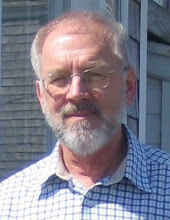
Both boys instinctively covered their eyes at the sudden burst of Arizona sun as their jailer led them out to the scaffold, according to the Tucson newspaperman who accompanied them. Stiffened by a shot of whiskey from Sheriff White, they climbed the steps with the coolness and nerve that twenty year old Texans are capable of. Hangings were public in 1900 Tombstone, so a large crowd heard their last words and watched the younger boy place the noose over his own head. The sheriff cut the single cord that released both traps. The brothers William and Tom Halderman "swung to eternity," scribbled one witness.
Time Magazine later said Tombstone was "used to glory in its duels, hangings, feuds," and declared the Halderman hangings its "most famed." That is notable, considering the competition for notability--the Clantons, Earps, Bat Masterson, the OK Corral, even Geronimo were local legends. Tombstone citizens considered the brothers cold blooded murderers and thoroughly approved of the hangings. Some residents, and all their Texas kin, thought they were hanged unfairly.
In April of 1899 deputy sheriff Chester Ainsworth had been dispatched to the nearby Chiricahua Mountains to arrest William Halderman on a warrant for cattle theft. On the way, Ainsworth picked up eighteen year old Ted Moore to help. They found the Halderman brothers breakfasting with a neighbor, J.W. Wilson and his son and two daughters. Wilson and the daughters later testified that the boys agreed to go peacably and the deputy suggested they grab what they wanted from inside, including breakfast. The boys stepped out moments later with rifles and dropped the deputy from his horse and mortally wounded the youthful Moore, who rode to his mother's house nearby and died in her arms. The boys lit out on foot but were captured five days later.
Cochise Co

unty hired a lawyer to defend the boys. Justice took only two months. The boys claimed self defense--Moore had shot first--but the testimony of Wilson and his two daughters convinced the jury otherwise. An execution date was set. An appeal to the state supreme court gained them a delay to the following March, by which time the boys' Texas family had swung into action.
William and Tom Halderman were scions of a wealthy and influential Texas family, the Kokernots. Their grandmother, Julia Ann Lang, was a sister of L.M. and John W. Kokernot, successful ranchers and businessmen. L.M. first sent the boys' uncle, D.L. Lang, to Arizona to investigate, followed by his own lawyer, S.H. Hopkins, of Gonzales, Texas. Hopkins filed flurries of affidavits with the court and the governor's office, to no avail. The governor of Texas pleaded with the Arizona governor for a commutation, without effect. The Texas family even travelled to Washington to plead with President McKinley, who achieved only a delay of two more months. All this activity, "sufficient to crush the Philippine rebellion," infuriated Tombstone residents, who were eager for a hanging. They got it on November 16.
Was this simply an example of wealth pleading for special consideration, or did the Texans have a legitimate complaint? The brothers' story was mostly drowned out, but they offered a different and believable sequence of events. First, Ted Moore, the youngster they had killed, had a long running feud with the older brother, William, over one of the Wilson girls, Rena, and had often vowed to kill Halderman. Witnesses could testify to this but the brothers were too inexperienced to insist. They said they stepped from the house armed because of fear of Moore, who in fact fired first, they said. William claimed Tom fired no shots and that Ainsworth was simply caught in the crossfire and may even have been hit by Moore.
The girls, Rena and Mary, testified after the trial that their father had insisted that they lie at the trial and say one of the Haldermans fired first. Their father, they said, feared the wrath of his neighbors if he became the cause of the Haldermans' release. The boys were so confident that these arguments would ultimately prove their innocence that when other inmates of the Tombstone jail staged a break, Will and Tom did not join them.
By the

day of the hangings, all the Texans had gone home. There was no one to claim the Haldermans' bodies, so they were buried beside each other in the town's iconic Boothill Cemetery.
The Wilson family fared no better than the Haldermans. Within a few years two of J.W. Wilson's sons were killed, one by being pushed into a well. Of the girls, Rena and Mary, one commited suicide and the other spent her life in an insane asylum.




















